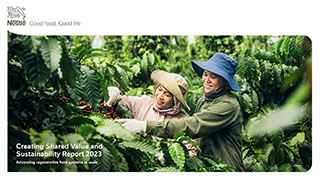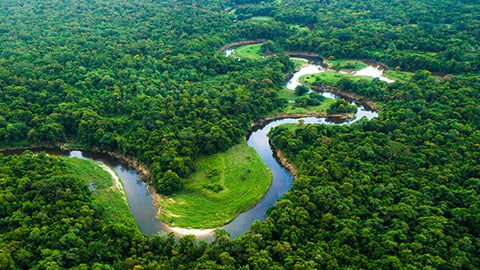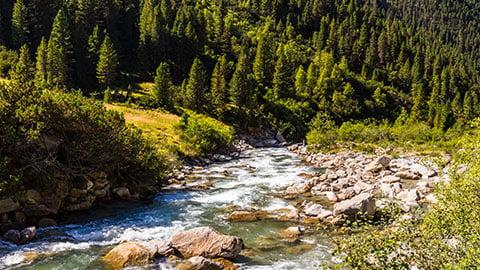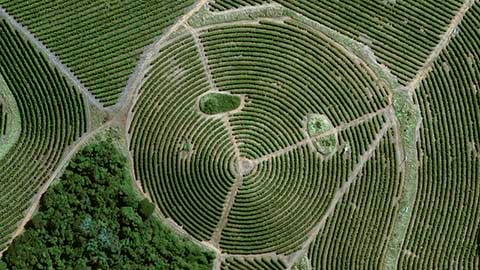Sustainable landscapes

In addition to preventing deforestation and restoring forests within our supply chains, we are helping to restore ecosystems in the wider landscapes our key ingredients come from.
The farms in our supply chains are not isolated – they are part of broader local economies with multiple industries and land uses. This is why we need to take action and apply integrated strategies that help address the many deforestation drivers in the key landscapes we source from.
By joining together with the private sector, governments, smallholder farmers and indigenous peoples and local communities, we can help achieve the vision of a regenerative and equitable agricultural system.
Working at landscape level
Reaching beyond our supply chains
Working at a landscape level is complex, but we believe it is necessary to have a significant impact. This is where the potential benefits for biodiversity, water stewardship, human rights, climate change and sustainable livelihoods intersect.
We need to work very closely with other stakeholders to achieve our goals. Here are some of the actions we are taking:
- Supporting sustainable landscape initiatives in our strategic procurement origins
- Focusing sourcing on landscapes demonstrating sustainable practices
- Supporting active conservation and restoration initiatives in priority landscapes
- Supporting smallholder livelihood initiatives in priority landscapes
- Participating in the development of sustainable finance mechanisms
Helping to conserve and restore the Cavally Forest
In 2020, Nestlé started a partnership with the Ministry of Water and Forests in Côte d’Ivoire and the Earthworm Foundation to help conserve and restore the Cavally Forest Reserve. During its first three years (2020-2023), the project has led to significant reductions in deforestation, natural regeneration, and the reforestation of almost 1500 hectares.
In 2023, the Cavally project entered a new phase with the additional support from new partners to achieve greater impact. These partners include the Swiss Federal Administration (SECO) via the Swiss Platform for Sustainable Cocoa (SWISSCO) as well as companies Touton and Cocoasource.
Beyond forest preservation, the project will aim to strengthen the resilience of the communities in the forest’s peripheral zone and improve the transparency and traceability of the cocoa and rubber supply chain.
Getting ahead of deforestation risk
In Indonesia, while the deforestation rate has decreased overall, it still persists in some crucial ecosystems that are carbon sinks, and home to unique flora and fauna. We are working with local groups to support the protection and restoration of forests, helping to increase smallholders’ livelihoods, increase their yields, and provide alternative income sources. Alongside partners, Earthworm Foundation, AAK and Proforest we have implemented projects throughout Indonesia. The Nestlé Palm team is also supporting landscape projects in Mexico and Malaysia.
Building a sustainable coffee legacy
Our Nespresso AAA Sustainable Quality™ Program supports farmers to use nature-based practices such as intercropping to increase soil and water resource health, biodiversity and the productivity of farming landscapes. Partnerships with non-profit Rainforest Alliance and PUR have help with implementing projects and monitoring progress.
Nature-based solutions and green finance
The Rimba Collective was developed by Lestari Capital in collaboration with founding partners. The program complements the palm oil industry’s efforts to end deforestation by funding conservation and restoration projects across the supply chain.
As part of the Rimba Collective, Nestlé’s goal is to protect 93 000 hectares and restore 23 200 hectares of forest landscapes locally by the end of 2025. One example in the Rimba Collective portfolio is The Tropenbos Project, which aims to better understand biodiversity impacts and dependencies, as the basis for planning and demonstrating good biodiversity performance using the Species Threat Abatement and Restoration (STAR) metric.
The assessment revealed that these four village forests hold immense global biodiversity value, providing a habitat for 97 endangered and near-threatened bird and mammal species across the sites. These include the Bornean Orangutan, Helmeted Hornbill and Proboscis monkey.
Key actions are being implemented to address challenges such as artisanal mining, logging by communities, hunting, fires and land clearance. These include crafting a wildlife conservation plan and sharing biodiversity and wildlife conservation management knowledge to the people living in the area.

Partnerships for greater impact
We cannot create sustainable landscapes alone. Nestlé works with partners throughout our supply chain and with industry-wide coalitions, such as the Consumer Goods Forum (CGF), Forest Positive Coalition and One Planet Business for Biodiversity, to help conserve high-value ecosystems.
Together, we are investing in landscape initiatives to help end deforestation and promote regenerative agriculture methods in areas assessed as at high risk of deforestation.
As part of our involvement in the CGF Forest Positive Coalition, we are involved in several palm oil, pulp and paper and soy landscape initiatives. Please read the CGF Forest Positive Coalition 2023 annual report featuring Nestlé’s initiatives.
In 2021, at COP26, the Coalition launched its Landscape Engagement Ambition to transform production landscape areas of a size equivalent to the combined production-base footprint of the members of the Coalition by 2030.

Ultimately, the most important thing is the actual forests that remain. If we have a deforestation-free supply chain but someone else cuts down all the forests, it’s a pretty empty victory. That’s why the wider landscape is important.










